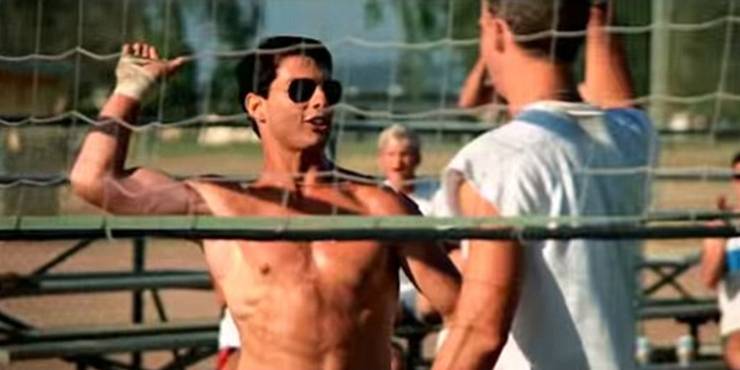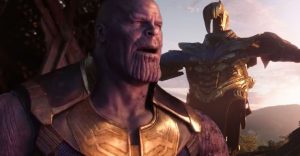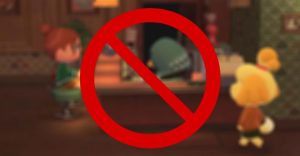How Top Gun Impacted The Real Life Flight School & Air Force

Top Gun was a massive hit when it was released in 1986, but how did the iconic action movie affect the real-life air forces (both USAF and Navy)? After 34 years spent in production, the belated sequel Top Gun: Maverick is finally arriving in cinemas in 2021, but despite the hype, it already appears unlikely that the movie will be able to recreate the success of the cult classic original Tom Cruise vehicle.
Intense, fast-paced, and surprisingly emotional for an action movie, Top Gun was an early hit for Cruise that saw the charismatic actor take on the role of Maverick, a reckless F14 pilot with a skill for flying and an insatiable need for speed. Top Gun made Maverick’s job seem like the coolest occupation on earth, despite poignant moments like Goose’s death hinting at the reality of the role’s risks. But what sort of impact did the phenomenally popular movie have on the real-life flight school and Navy’s air force?
For the real-life US military air forces, Top Gun’s blockbuster success was a mixed blessing, but one which leaned heavily toward the positive for their operation. The movie may have received mixed reviews during its original release, but it performed incredibly well in financial terms, earning over 350 million on a budget of 15 million. With its glamorous depictions of high-flying stunt work, the irrepressibly fun Top Gun essentially served as a feature-length advertisement for the US military’s aviation programs at a time when conscription levels weren’t high and the public perception of America’s military was far from universally positive, although this new-found popularity wasn’t without its problems.
Top Gun’s Impact on Aviation Recruitment

The success of Top Gun directly contributed to a 500% increase in applications to the United States aviation forces, a hitherto-unheard of impact for a mainstream movie. Despite not being directly affiliated with the organization, Top Gun’s filmmakers did make minor adjustments to the movie to appease military officials and gain access to real-life equipment. This was and remains a standard practice for many large-scale Hollywood productions, whose scripts must be approved by the Pentagon before they can use any actual military hardware in production. Among these changes was the decision to make Cruise’s love interest Charlie a civilian engineer rather than a serviceperson, as romantic relationships between colleagues were disallowed at the time. These changes paid off for the US Navy in particular, who set up sign-up booths at some screenings of Top Gun to capitalize on their newfound popularity and recruit cinema-goers straight out of the multiplex.
Top Gun’s Expensive Quotes

Of course, just because theatre patrons were seduced by the allure of Top Gun’s action sequences doesn’t mean that all of them were prepared for the reality of serving in the Air Force or Navy’s air force. Quite a few recruits weren’t cut out for the force, as proven by a rule outlined by former pilot Guy “Bus” Snodgrass. According to Snodgrass, recruits were (and still are) regularly fined for quoting the movie, with any line from Top Gun costing $5 per quote. Even though the movie brought many into the US’s air forces, it also caused no end of frustration amongst the officers who were training them and needed recruits to separate fact from fiction before getting behind the wheel of a fighter plane.
Top Gun’s Impact on Public Perception

While not all of the recruits brought on board by Top Gun were ready to serve, the movie nonetheless changed the public perception of the US military’s aviation wings immeasurably. Twelve years after the end of America’s bloody, two-decade invasion of Vietnam, the young viewers watching Top Gun were no longer likely to have grown up associating the US military’s history of foreign intervention with bitter protests and international uproar over the country’s war crimes. While the invasion of Vietnam still affected the everyday lives of the country’s surviving civilians as well countless American veterans, the American public was gradually beginning to move past viewing the military as an institution whose utility was up for debate.
That changed when Oliver Stone’s excoriating, tragically true-to-life drama Platoon illustrated the brutal realities of the Vietnam invasion for cinema audiences the same year Top Gun was released. An incendiary anti-war film that was written and directed by a veteran of the conflict, Platoon was praised for its realism and proved problematic for the US military as its eponymous platoon was populated by inexperienced burnouts, sociopathic murderers, and numb, emotionally devastated antiheroes. The military needed a more flattering cinematic portrait, and they got it with the success of Top Gun.
Why Top Gun’s Impact Mattered

The image of a charming, daring young pilot serving his country was a powerful antidote to Platoon’s anti-war message, particularly when the Navy and Air Force weren’t as closely associated with the cultural image of Vietnam as the infantrymen seen in realistic Vietnam movies like Apocalypse Now, Platoon, and Full Metal Jacket. The immediate rise in aviation force applications that followed the release of Top Gun proved that Stone’s movie didn’t permanently put viewers off the military. By focusing on the Navy’s air force, rather than the military Top Gun managed to largely avoid addressing Vietnam, and the movie’s lone mention of the invasion illustrates how effectively the 1986 movie reframed the US military. Vietnam is briefly mentioned in the backstory of Maverick’s father, who Cruise’s character thought died due to negligence, but eventually discovers was willing to bravely sacrifice himself to save others during the war.
While Cruise would go on to star in a later anti-war Vietnam movie from Stone in the moving biopic Born on the Fourth of July, and Top Gun did touch on Maverick’s tragic side, the movie still succeeded in turning Vietnam from a source of shame for the US military into just another war akin to the Korean War, WWII, or WWI. The fact the father of Top Gun‘s hero, and not Maverick himself, died in the invasion put the event firmly in the past and allowed not only Maverick the character to move on, but also American audiences to start viewing the military positively again via the more glamorous air forces. It’s a maneuver more explicitly seen in the same year’s cartoonishly ahistorical Rambo: First Blood Part II, which transformed the original Rambo: First Blood‘s story of a disturbed Vietnam veteran fighting overpowered US state authorities into a gory wish-fulfillment scenario where the title character gets to fight the Viet Cong again, “but this time we win.” The sentiment is more subtly seen in the public reaction to Top Gun, where it’s back to business as usual for the US military, any mention of Vietnam is related to an American soldier’s heroism, and the actions of the fighter pilots are assumed to be heroic, helpful, and above all else, cool.
- Top Gun: Maverick/Top Gun 2 (2022)Release date: May 27, 2022
About The Author


















